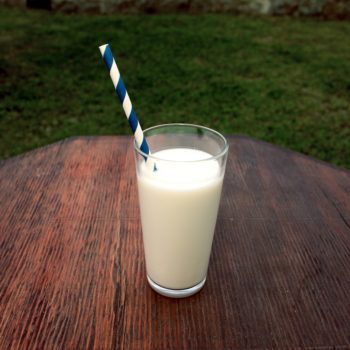FSAI publishes first healthy eating recommendations for one to five year-olds

Parents and guardians are warned against using some beverages such as almond ‘milk’, coconut ‘milk’ and rice ‘milk’, as milk substitutes as these are nutritionally inadequate, the report states
23 June 2020
The Food Safety Authority of Ireland (FSAI) has published a report outlining food-based dietary guideline recommendations for one to five year-old children living in Ireland, with positive findings for the dairy industry.
The latest Irish research on the dietary habits of this age group was used by the FSAI’s Scientific Committee to develop these guidelines, which reflect international best practice on young child feeding in an Irish context.
It is the first time a national scientific report addresses the nutritional needs of toddlers and pre-school children living in Ireland. These guidelines cover the gap in Irish scientific dietary recommendations for the post-infancy period – a phase that starts on their first birthday and ends at the age of five, when the general population healthy eating recommendations begin to apply.
According to Dr Pamela Byrne, CEO, FSAI, children in this age group are at a development stage, where their increasing wish is to make their own decisions about what they eat, and this can be challenging.
“We know that dietary habits which can last for a lifetime are formed during this critical phase,” said Dr Byrne.
“We live in an age where there are so many confusing messages and information about food and nutrition, and today’s parents and guardians are facing more challenges than ever to ensure their children are getting the right diet to support their healthy development,” she added. “Also, many children in this age group develop a preference for sweet, salty and energy-dense foods, which can be difficult for parents and guardians to manage.”
Dr Byrne said the report’s recommendations will “empower parents, guardians and health professionals in Ireland to best support this essential stage in a child’s development”.
Key recommendations from the report include:
- Milk is a key food, with a daily intake of 550ml of cow’s milk, or equivalent amounts of yoghurt or cheese, is recommended.
- Water and milk are the only drinks recommended for this age group. Sugar-containing and acidic drinks should be limited and, if consumed at all, should be kept to mealtimes.
- Parents and guardians are warned against using some beverages such as almond ‘milk’, coconut ‘milk’ and rice ‘milk’, as milk substitutes as these are nutritionally inadequate. If a plant-based beverage is required to replace cow’s milk, a soya ‘milk’, can be used, provided it is fortified with nutrients, particularly calcium.
- A portion of vegetables should always be included at the main meal, together with the number of small portions of salad, vegetables or fruit that match the age of the child, for example two small portions for a two year old, four small portions for a four year old (the portion size given should fit into the child’s hand so that smaller children are given less and bigger children more).
- Lean red meat (about 30g) is recommended three days a week for iron and other essential minerals in addition to protein. On other days, red meat can be replaced with poultry, fish, eggs, beans or lentils which also provide iron, as well protein and minerals. Smooth nut butters also provide protein.
- A combination of both white and wholemeal breads, cereals, potatoes, pastas and rice will provide adequate fibre and are important sources of calories.
- Foods high in fat, high in sugar or salt such as confectionery, cakes, crisps, biscuits and sugar-coated breakfast cereals are not recommended. There is very little room for such foods in a one to five year-old’s diet, so such foods either overwhelm the child’s capacity for nutritious foods or provide additional calories that lead to the development of overweight or obesity.
- Fats, spreads and oils should be used minimally.
- During the extended winter months – from Hallowe’en to St Patrick’s day, all children aged one to five years need to be given a low-dose (5 µg) vitamin D-only supplement to make up for lack of skin synthesis of this vitamin from sunlight.
- Young children aged one to three years, who are naturally small (25th percentile or less on growth charts) need extra iron, which can be taken as an iron-fortified full-fat milk, or a low-dose iron supplement.
- Encouraging acceptance of the wide range of flavours and textures naturally found in the food people need for healthy eating throughout life is important at this young life stage. Fostering a tolerance to ‘try’ an expanding variety of vegetables, salads, fruits, meat, fish and wholemeal cereals helps children develop a taste for nutritious foods. To assist this, small amounts of sugar can be used e.g. in stewed fruit, milk puddings, in jam on wholemeal bread or as a small portion of ice cream on fruit etc.
- If a key food group is excluded from a child’s diet because a food allergy is suspected without proper indication or appropriate professional advice being sought, the growth and development of a child can be compromised.
The recommendations of the Scientific Committee are available on the FSAI website.



 Print
Print




Fans 0
Followers